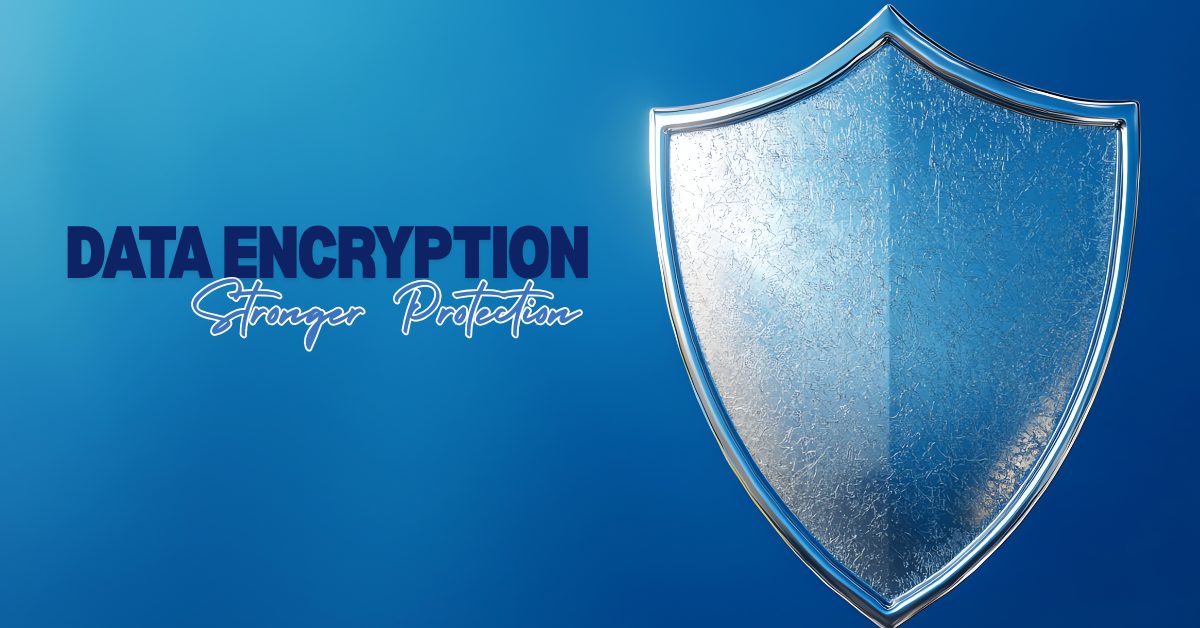Why Data Encryption Best Practices Matter for Every Organization
At Gallop Technology Group, we know that protecting sensitive information is more than just good business—it’s a responsibility. Every company, regardless of size or industry, handles data that could be devastating if stolen or exposed. Customer records, financial transactions, employee files, healthcare data, intellectual property—all of these are prime targets for cybercriminals.
That’s where data encryption best practices come in. Encryption transforms readable information into coded text that only someone with the right digital key can access. It’s one of the strongest defenses against cyber threats, insider leaks, and accidental losses.
In this article, we’ll explain how encryption works, explore the best practices you should adopt, highlight real-world examples, and show how partnering with experts like Gallop Technology Group can make the process seamless.
Understanding the Basics of Data Encryption Best Practices
What Exactly Is Encryption?
Encryption is like sending a locked box through the mail. Anyone can carry the box, but without the right key, it’s useless.
When you apply data protection encryption, you scramble information into unreadable code. Only someone with the corresponding decryption key can unlock and make sense of it. This means even if hackers break into your system, what they see is gibberish instead of valuable data.
Why Encryption Is More Important Than Ever
Data has become one of the most valuable commodities. Cybercriminals steal and sell personal records, login credentials, and credit card numbers on the dark web. Businesses face:
- Financial risks: Fines, lawsuits, and recovery costs after a breach.
- Reputation damage: Losing client trust can take years to rebuild.
- Regulatory penalties: Non-compliance with industry laws can cost millions.
By following best practices for encryption, businesses can stay compliant, avoid costly breaches, and maintain trust.
Types of Encryptions Every Organization Should Implement
File and Folder Encryption
This protects data stored on devices such as laptops, desktops, and external drives. Programs like BitLocker (Windows) and FileVault (MacOS) can encrypt entire hard drives. If the device is stolen, the data remains secure.
Case Example: In 2021, a company avoided reporting a breach under data protection laws because its stolen laptops were fully encrypted. Regulators deemed the data inaccessible.
Email Encryption
Emails are one of the easiest attack points for hackers. Encryption ensures only the intended recipient can read the message. Tools like Microsoft 365’s built-in encryption protect both the message body and attachments.
Case Example: A law firm sending sensitive client contracts encrypted all communications. When their email server was compromised, attackers couldn’t read a single file.
Cloud Encryption
Businesses increasingly store sensitive files in cloud platforms. Cloud encryption ensures data remains protected while stored and transmitted. Combined with strong passwords and two-factor authentication, it dramatically reduces risks.
Web Traffic Encryption
When you visit a website with HTTPS in the URL, that’s SSL/TLS encryption at work. It secures communication between a user’s browser and the website, protecting personal information during logins and transactions.
Case Example: An e-commerce store without SSL lost thousands of dollars after attackers intercepted credit card details. After implementing SSL, customer confidence and sales recovered.
Database and Application Encryption
Applications like CRM systems and financial databases hold highly sensitive data. Encrypting these ensures internal staff or hackers can’t exploit information even if they gain access to systems.
Implementing Data Encryption Best Practices Step by Step
Use Strong Encryption Algorithms
Not all encryption is created equal. Outdated methods can be cracked by modern computers. The Advanced Encryption Standard (AES-256) is currently one of the most secure methods and is recommended worldwide.
Think of it as the difference between using a flimsy padlock and a high-grade vault door.
Regularly Update Encryption Keys
Keys are like digital locks. If one is compromised, all data secured with that key becomes vulnerable. By rotating and updating keys regularly, organizations reduce the risk of long-term exposure.
Create and Enforce Encryption Policies
Policies ensure encryption isn’t left to chance. Examples include:
- All sensitive emails must be encrypted automatically.
- Portable drives must be encrypted before leaving the office.
- Employees are forbidden from storing unencrypted data on personal devices.
Clear policies create consistency and accountability.
Train and Educate Employees
Employees are often the weakest link in data security. Training ensures they:
- Understand why encryption to protect data is vital.
- Know how to use encryption tools effectively.
- Recognize risks like phishing attempts designed to bypass encryption.
Monitor and Audit Regularly
A “set it and forget it” approach doesn’t work. Businesses must audit their encryption practices to:
- Confirm compliance with laws like HIPAA or PCI DSS.
- Spot vulnerabilities (e.g., backups left unencrypted).
- Adjust strategies as new threats emerge.
The Benefits of Following Data Encryption Best Practices
Protecting Against Data Breaches
Breaches can cost an average of $4.45 million globally per incident (IBM Security, 2023). Encryption makes stolen data useless, reducing damage significantly.
Building Client Trust
When businesses adopt data protection encryption, they reassure customers that their information is safe. This trust often becomes a competitive advantage.
Supporting Business Continuity
Data breaches cause downtime. Strong encryption ensures sensitive data remains locked down, allowing companies to focus on recovery without total disruption.
Myths vs. Facts About Encryption
- Myth: Encryption slows systems down.
Fact: Modern algorithms are highly efficient, and performance impacts are minimal compared to the protection offered.
- Myth: Encryption is only for large companies.
Fact: Small and medium businesses are frequent targets because hackers know they often lack strong protections.
- Myth: If data is encrypted once, it’s safe forever.
Fact: Without regular key updates and audits, encryption can be compromised over time.
- Myth: Encryption is too complex for employees.
Fact: User-friendly tools like Microsoft 365 and built-in device encryption make it simple for everyday use.
Common Mistakes to Avoid with Encryption
- Relying on outdated encryption methods like DES.
- Forgetting backups: Encrypted production data is useless if unencrypted backups are stolen.
- Weak password management: If encryption keys are protected by simple passwords, hackers can still break in.
- Encrypting selectively: Protecting only “important” files leaves vulnerabilities.
Practical Tips for Applying Best Practices for Encryption
- Turn on full-disk encryption on all devices.
- Encrypt portable storage such as USBs and external drives.
- Use strong, unique passwords for encryption keys.
- Apply multi-factor authentication on all systems storing sensitive data.
- Encrypt video calls or chats that involve confidential discussions.
- Require VPN usage for remote employees.

The Future of Data Encryption
Technology continues to advance and so do cyber threats. Businesses must prepare for what’s next:
- Homomorphic Encryption: Allows data to be analyzed without being decrypted, reducing exposure.
- Quantum-Resistant Algorithms: As quantum computers advance, traditional encryption could be broken in seconds. Researchers are developing quantum-safe methods.
- Zero Trust Models: These assume no user or device can be trusted by default, making encryption a core part of every access request.
- AI-Powered Threat Detection: Artificial intelligence is being used to identify weaknesses in encryption deployment and strengthen policies.
Staying ahead of these trends will keep businesses prepared for the next wave of cyber threats.
Real-World Case Studies: Encryption in Action
- Healthcare Example: A clinic encrypts its patient management system. After a ransomware attack, the attackers steal files but cannot use or sell them because they’re encrypted. The clinic avoids HIPAA fines.
- Financial Example: A small accounting firm encrypts all client tax returns. When an employee accidentally sends files to the wrong email address, the recipient cannot open them without authorization.
- Retail Example: A retailer that failed to encrypt payment data suffered a massive breach. The stolen card data led to fines and lost customer trust. Years later, the brand is still recovering.
These stories show the difference between being prepared and paying the price.
Secure Your Data with Gallop Technology Group
Data is the lifeblood of every organization and protecting it must be a top priority. Losing sensitive information—or failing to secure it properly—can result in financial penalties, compliance failures, reputational damage, and loss of customer trust. By following data encryption best practices, businesses can safeguard valuable data, prevent breaches, and ensure they remain compliant with regulatory requirements. Encryption not only defends against cybercriminals but also reassures clients that their information is in safe hands.
At Gallop Technology Group, we provide tailored solutions including managed encryption, cybersecurity services, cloud hosting, and compliance support to help organizations strengthen their defenses and secure what matters most. Don’t wait until a data breach exposes your vulnerabilities, partner with Gallop Technology Group today to protect your business and build lasting trust.
Source:
National Institute of Standards and Technology (NIST). Guide to Storage Encryption Technologies for End User Devices.
https://csrc.nist.gov/publications







